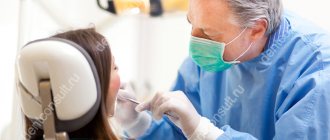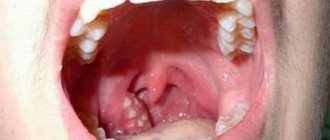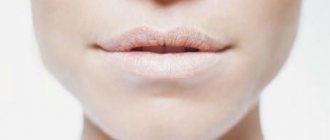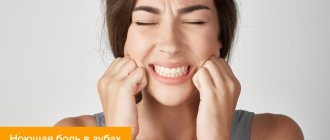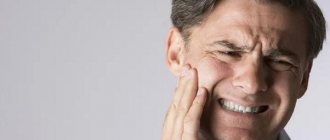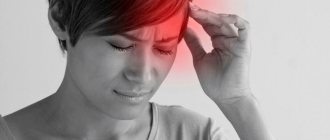Causes
The organs of the skull are interconnected by a network of blood and lymphatic vessels and cranial nerves. These are the channels through which the infection is transmitted from the ears to the eyes, passes to the throat and back. The symptoms are complex. It is difficult to determine the source of inflammation. But there are several main causes of pain in the ears and eyes.
Neuralgia
With inflammation of the trigeminal nerve, pain spreads to the forehead, temple on one side of the face, and ear. The eye muscle on the affected side, the brow ridge, hurts.
The temperature remains normal. The pain comes in attacks, especially severe at night. The site of inflammation is sensitive to touch.
Causes of neuralgia:
- pathologies of the development of skull bones;
- compression due to tumor;
- traumatic brain injury.
The disease is difficult to diagnose. Treatment consists of pain relief. The sensitivity of the trigeminal nerve increases with the changing seasons. Psychosomatic neuralgia manifests itself as an exacerbation of pain during stress.
Otitis
Inflammation of the middle ear occurs due to the spread of coccus bacteria, which causes a runny nose. Otitis externa and otitis media are distinguished. The auricle becomes covered with boils due to the spread of infection from the ear canal.
A fungal infection also spreads in the middle ear. The fungus appears due to the accumulation of moisture.
The eye is affected by the affected ear. The infection occurs when one bottle of drops is used simultaneously to treat the eyes and ears. The result is lacrimation and redness of the conjunctiva.
Labyrinthitis
The inner ear consists of a plexus of passages and resembles a labyrinth. Labyrinthitis is inflammation in the inner part of the hearing aid.
Causes of the disease:
- spread of infection from the middle ear;
- tuberculosis;
- fungus;
- mechanical damage.
Symptoms of labyrinthitis appear 2 weeks after recovery from a respiratory infection. The disease causes dizziness and nystagmus - involuntary movement and tremors of the eyeballs.
Migraine
Hemicrania occurs on one side of the head. Throbbing pain is accompanied by photosensitivity. With migraine with aura, the field of vision is lost. Aching ear pain is accompanied by noise and ringing. In severe conditions, a person experiences auditory hallucinations.
Osteochondrosis
Salt deposits in the intervertebral discs of the cervical spine pinch blood vessels. As a result, brain tissue and cranial organs receive little oxygen. There is sand and a burning sensation in the eyes. There is stuffiness and ringing in the ears.
Intracranial pressure
Increased tone of the vessels of the cranium is a consequence of osteochondrosis. Other causes of pressure:
- thrombosis;
- traumatic brain injury;
- tumor;
- hypertension;
- accumulation of cerebrospinal fluid.
A drawing, throbbing pain is concentrated on one side of the head, covering the eye and ear.
Flu
An acute respiratory infection affects the mucous membranes of the nose and throat. Abundant mucous masses accumulate in the nasal sinuses. Rhinitis develops into sinusitis, inflammation of the inner, middle ear. Obstruction of the nasal passages deprives the tissues of oxygen.
The eyes feel dry, small capillaries burst due to coughing attacks. This creates a complex of symptoms characteristic of various colds. Only a doctor can make an accurate diagnosis.
Tumor
New growths in the brain create compression on surrounding structures. Pressing pain appears as the tumor grows penetratingly. Compression of blood vessels and nerves causes visual and hearing impairment. Symptoms are characteristic of various diseases, so oncological pathology is difficult to establish.
When to contact a specialist
The appearance of a throbbing headache is already a “bell” that you need to see a doctor and get checked. And few people know that there are situations that oblige the patient to contact a specialist to alleviate the condition, and sometimes even save a life.
If you notice that:
- The pain lasts for more than one hour, and medications do not help.
- The pulsation becomes stronger, despite the fact that the patient does nothing.
- Pain in the occipital region appears immediately after a person wakes up or awakening occurs due to unbearable sensations that do not allow doing anything.
- A buzzing sensation is often felt in a certain area of the head.
- The pain causes dizziness, nausea, vomiting, partial paralysis, clouding of consciousness, and inability to speak normally.
- Intense pulsating beats that do not stop for several days.
- Changes in blood pressure, which are accompanied by headaches.
- The nature of the throbbing pain constantly changes.
If you notice any of the above changes, you should immediately consult a doctor or an ambulance, as serious problems may be hidden behind this.
Diagnostics
If pain in the ear and eyes occurs, the following diagnostic procedures are performed:
- if inflammation of the trigeminal nerve is suspected - electroneuromyography;
- to confirm otitis - tympanometry, audiometry, MRI;
- influenza is diagnosed based on the results of a virological examination of a nasal smear;
- increased cranial pressure is determined by MRI and lumbar puncture results.
The degree of damage to the optic nerve is determined using ophthalmoscopy.
Elderly age
The older a person is, the more often he suffers from throbbing pain in the head, and most often this is associated with pressure and changes in the cervical spine. But there are also a number of reasons that pose a danger to older people, and these include:
- presence of a tumor in the brain;
- presence of hematomas in the brain;
- trigeminal neuralgia;
- temporal arteritis;
- intoxication;
- presence of infectious diseases;
- stroke.
Pain in the head can also be a consequence of menopause in women, weather sensitivity, which occurs in any gender, and depression.
Treatment
In accordance with the diagnosis, therapy is prescribed:
- for neuralgia, relieve pain with analgesics, lidocaine-based ointment, and drugs for vasodilation;
- antibacterial drops and ointments are used to treat otitis externa;
- drops against inflammation with an analgesic effect - for internal otitis;
- Ear infections are treated with penicillin and amoxicillin antibiotics - orally, by insertion into the ear through a catheter.
For more serious diagnoses, pain is relieved and the primary cause of symptoms is treated.
In the eye and forehead area
Headaches in the forehead area are caused by various factors.
Cluster or beam pain occurs in the eye area. She may return after a while. Sometimes attacks continue for several hours. A headache that radiates to the eyeball can be a sign of migraine, eye diseases, brain tumors, and neurological diseases of the brain. It often occurs after severe or prolonged stress. The cause of the headache may be inflammation of the maxillary or frontal sinuses. It often radiates into the eyeballs. Sinus headache disappears after the underlying disease is cured. Pain in the forehead is a common symptom of meningitis, malaria, typhoid, and pneumonia.
Prevention
How to prevent the occurrence and spread of infection:
- treat colds promptly;
- do not overcool your head;
- Dry your ears thoroughly after bathing;
- take vitamins to strengthen the immune system;
- use separate bottles of universal drops for treating eyes and ears;
- Carefully clean the ears with cosmetic sticks so as not to damage the eardrum.
Compliance with the rules of prevention and immediate treatment prevents complications. Independent choice of drops, antibiotics, irregular use of drugs only until the first improvement introduces the disease into a chronic state.
The consequence will be the transfer of infection to the lining of the brain - meningitis.
Primary headache. Major diseases.
The most common forms of primary headache are “tension pain” and migraine, more rarely – cluster headache and other forms.
Tension headache (TTH)
can occur in anyone. This is the most common form of headache and is often characterized as a “normal” or “regular” headache. Attacks can last from 30 minutes to several days. The frequency of attacks varies from person to person, and it can also vary from one person to another during different periods of his life. The pain is described as squeezing, squeezing the head like a hoop or tight hat, usually bilateral, and moderate. In some people it can become chronic (chronic pain is diagnosed if there are more days with a headache than without it). A person experiencing chronic headaches becomes irritable. Weakness, fatigue, decreased appetite, and sleep disturbances may occur. The cause of TTH is physical tension in the muscles and ligaments of the head and neck - the so-called “muscle stress”, which can be a consequence, for example, of working in an uncomfortable position. TTH often occurs in those who work at a computer or whose work involves the need to look at details (jewelers, watchmakers, assemblers of electronic equipment, masters of artistic embroidery, etc.). The emotional factor is also important: emotional tension caused by stress or a state of increased anxiety can also lead to pain.
Migraine
characterized by severe and painful attacks of headache, which are often accompanied by nausea (and in some cases vomiting), as well as intolerance to light and sound. The perception of smells changes, thermal sensations are disrupted. Migraine attacks last from 4 hours to 3 days and can be repeated with a frequency of 1-2 times a year to several times a month. During an attack, so-called “precursors” may be observed - irritability, depression, fatigue, occurring several hours or even days before the onset of pain. In a third of cases, pain is preceded by phenomena called “auras”: 10-30 minutes before the attack there may be visual disturbances (blind spots, flashes, zigzag lines in front of the eyes), tingling and numbness starting from the fingertips and spreading up the body and etc.
Predisposition to migraine is congenital and is associated with disorders in the brain structures responsible for pain and other sensations. Every seventh adult suffers from migraines, with women three times more likely than men. In girls, migraines usually begin during puberty.
Factors that contribute to the development of migraine attacks: chronic fatigue, anxiety or stress, in women - menstruation, pregnancy and menopause.
But a predisposition to seizures does not mean that an attack will definitely happen. There are factors that act as a “trigger” for an attack. An attack can be triggered by: skipping meals, insufficient fluid intake, certain foods, sleep disturbances, physical activity, changes in weather, sudden changes in emotions.
Cluster (or beam) headache
characterized by one-sided sharp (“dagger” or “drilling”) pain. The intensity of the pain rapidly increases within 5-10 minutes, and the attack itself lasts from 15 minutes to 3 hours, during which the patient cannot find a place to rest. The pain is usually localized in the eye area, and the eye may become red and watery. Recurrent attacks form a cluster (that is, they follow each other), the duration of the cluster is from 6 to 12 weeks. This form of pain occurs five times more often in men than in women. However, those who smoke a lot or have smoked in the past are more susceptible to it.
